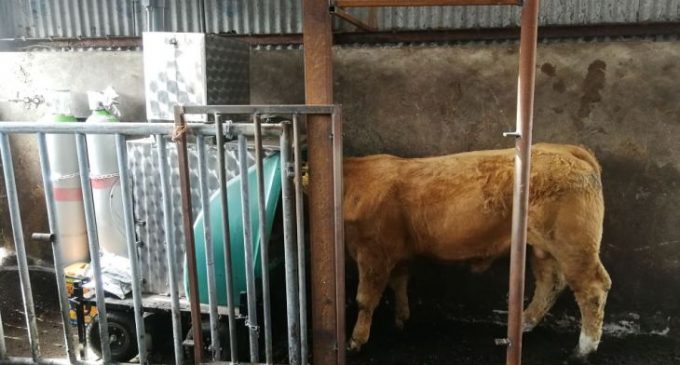Promising results from Ireland’s first large scale measurement of methane emissions in beef cattle

The first large scale characterisation of methane emissions in Irish beef cattle conclusively shows that some beef cattle can produce up to 30% less methane emissions, on average, for the same level of productivity.
Novel research led by Teagasc, in collaboration with colleagues at University College Dublin (UCD) and the Irish Cattle Breeding Federation (ICBF), are making strides towards identifying, and ultimately, breeding for low methane emitting beef cattle in a bid to improve the environmental sustainability of the national beef cattle herd in Ireland.
To date the genetic selection of low methane emitting ruminant livestock has been limited by the relationship of methane output and feed intake. As Teagasc Walsh Scholar PhD student Paul Smith explains; “In general on the same plane of nutrition, animals that consume more feed tend to produce more methane on a daily basis. This relationship has so far made it difficult to breed low methane emitting animals without negatively impacting feed intake, which is a key driver of animal productivity, particularly in forage based production systems.”
However, Teagasc’s Professor Sinéad Waters, Professor David Kenny, Paul Smith and Stuart Kirwan, along with, UCD’s Dr Alan Kelly and ICBF’s Dr Stephen Conroy, working collaboratively through an ERA-GAS funded project ‘RumenPredict’, have recently developed a novel approach to quantifying emissions in beef cattle, capable of disentangling the relationship of feed intake with methane output. In their study, recently published in the American Journal of Animal Science, the group showcase the benefits of utilising a new concept termed residual methane emissions (RME) to select low methane emitting animals without impacting animal productivity. The study is the first large scale measurement of methane emissions in Irish beef cattle and one of the largest conducted worldwide.
Residual methane emissions can be defined as the difference between an animal’s actual and expected methane output, based on the quantity of feed that it consumes on a daily basis and its bodyweight. Describing the study, Paul Smith added; “we calculated RME values for 282 beef cattle undergoing feed efficiency and methane measurements at the ICBF Progeny Test Centre in Tully, County Kildare. After ranking animals as high, medium and low on the basis of RME, low RME animals produced 30% less methane, but maintained the same level of feed intake, feed efficiency, growth and carcass output as their high ranking RME contemporaries”.
Discussing the significance of the findings, Teagasc researcher Professor Waters said: “Considering the recent greenhouse gas emissions targets set out in the government’s Climate Action Plan and particularly our requirement to reduce biogenic methane, the ‘RumenPredict’ project demonstrates the future potential to breed beef cattle with lower methane emissions”. This project was the first to employ GreenFeed technology to measure methane emissions in Irish cattle and this technology has now been deployed across Teagasc, UCD and ICBF research facilities, enhancing our national capacity to accurately measure methane emissions.
Head of Animal and Bioscience research at Teagasc, Professor David Kenny said that it will be critically important for the continued economic and environmental sustainability of Ireland’s multi-billon euro beef industry that we continue to apply state-of-the-art science to identify and breed from the most productive, yet low methane emitting cattle. This new methane measurement approach coupled with on-going work to develop nutrition based mitigation solutions will deliver a more resilient Irish beef industry.
Senior author on the study, UCD’s Dr Alan Kelly added: “These are really encouraging findings for Irish beef producers. Low RME cattle from the national beef herd produced a third less methane for the same level of performance and feed input, with these emission differences recorded for all universally accepted metrics of methane expression, be it daily emissions, methane yield or methane intensity. Going forward, from a research perspective, we need to understand the biology underlying why these cattle are producing less methane.”
Commenting on the future direction of this research, ICBF’s Dr Andrew Cromie said: “The work completed by Paul Smith and the team has helped us identify the key methane trait (i.e., RME), which we must focus on for methane mitigation in the future. The next step for the ICBF, Teagasc and UCD team will be to broaden the investigation into the relationship between RME and other important traits at a genomic level with a view to harnessing this information within our national beef cattle genetic selection indices.”

































